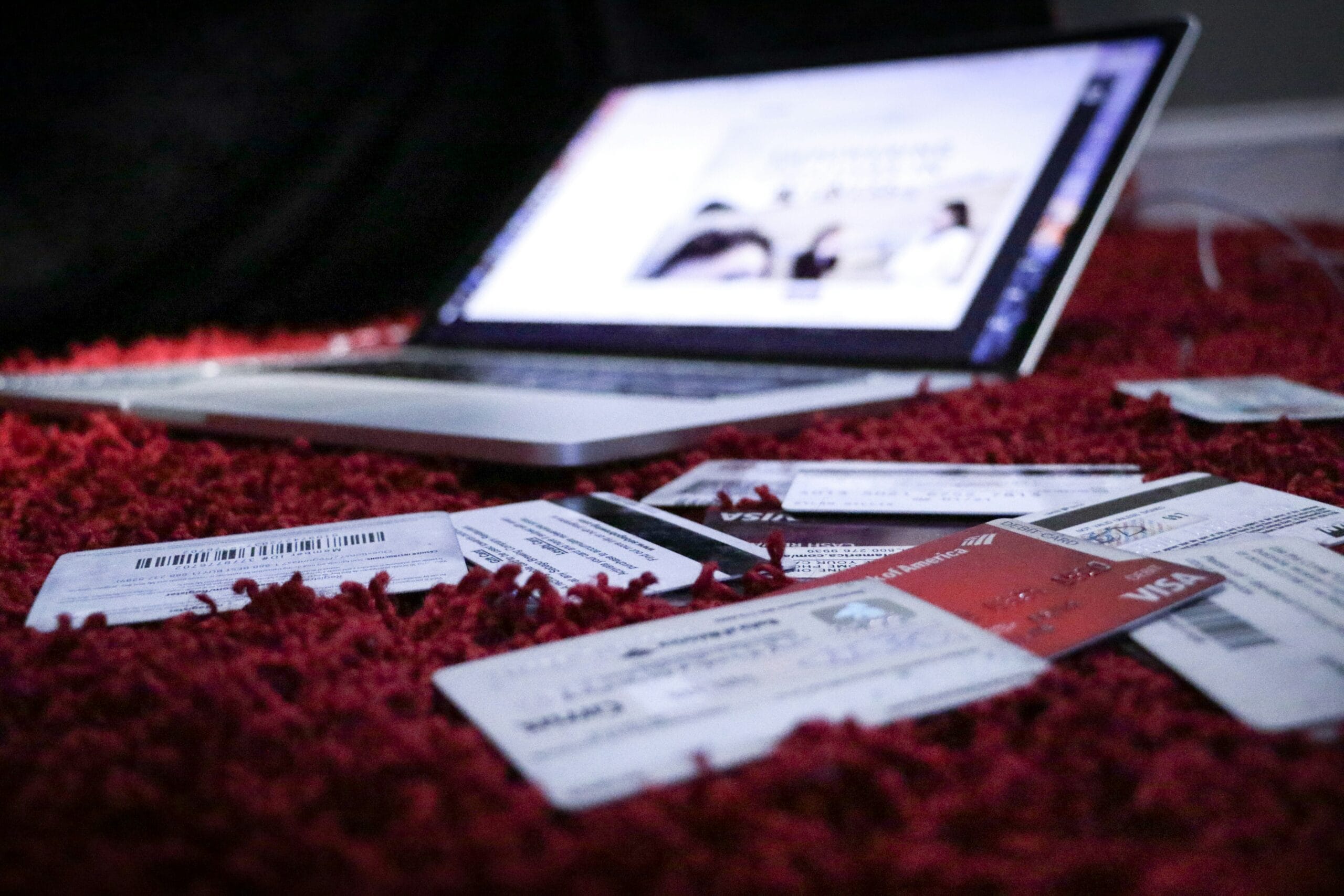Budgeting for Beginners: A Comprehensive Guide to Financial Success

Understanding the Basics of Budgeting
Budgeting is a fundamental financial management tool that helps individuals and households monitor their income and expenses, ultimately guiding them toward achieving their financial goals. At its core, a budget is a structured plan that outlines how money will be allocated over a specific period, typically on a monthly or yearly basis. This process is essential for maintaining financial health, as it provides clarity on where money is coming from and where it is being spent.
Key components of budgeting include income, expenses, and savings. Income refers to the money received from various sources, such as salaries, investments, and side jobs. Understanding one’s total income is crucial, as it forms the basis for all budgeting efforts. Expenses, on the other hand, encompass all the outflows of money, which can be categorized into fixed and variable costs. Fixed costs are predictable, recurring expenses such as rent or mortgage payments, utility bills, and insurance. Variable costs fluctuate and may include discretionary spending on entertainment, dining out, and shopping.
Moreover, budgeting involves setting savings goals, which could be for emergencies, vacations, or retirement. Establishing a savings plan as part of the budgeting process can significantly alleviate financial stress and contribute to long-term stability. It’s also important to distinguish between needs and wants, ensuring that essential expenses are prioritized to maintain a balanced budget.
To visualize these components, illustrative diagrams can greatly aid in grasping the relationships between income, expenses, and savings. Such tools can provide a clearer understanding of how to efficiently allocate funds and identify areas for potential adjustment. Overall, budgeting for beginners is more than just a list; it is a proactive approach to ensuring financial security and achieving monetary objectives. Understanding these fundamentals forms the foundation for successful financial management.
Assessing Your Current Financial Situation
Understanding your financial situation is a crucial first step in effective budgeting for beginners. The assessment process begins with tracking your income. This includes all forms of income, such as salary, freelance work, rental income, and any passive earnings. Create a detailed list of these sources and the amounts received on a monthly basis, as this will provide a clear picture of your overall financial inflow.
Next, categorizing your expenses is fundamental to this financial evaluation. Begin by documenting your monthly expenses, separating them into fixed and variable categories. Fixed expenses include rent or mortgage, utilities, and insurance, which remain the same each month. Conversely, variable expenses encompass groceries, entertainment, and discretionary spending, which may fluctuate. Use a simple spreadsheet or budgeting software to record these details systematically. This not only aids in recognizing spending patterns but also highlights areas where cutting back may be possible.
Moreover, understanding your current debts is vital for a comprehensive financial assessment. List all outstanding debts, including credit card balances, student loans, and personal loans, along with their respective interest rates. Calculate the total amount owed and evaluate your monthly payment obligations. This will help you develop a strategy for debt management, integrating it into your overall budgeting plan. You may find worksheets or online templates useful for this purpose, as they can streamline the process and ensure nothing is overlooked.
Accurately assessing your current financial situation involves thorough tracking of income, detailed categorization of expenses, and a clear understanding of any debts. By implementing these strategies, beginners can establish a solid foundation for developing an effective budget, paving the way toward financial stability and success.
Setting Financial Goals
Establishing clear and attainable financial goals is a fundamental step for anyone embarking on the journey of budgeting for beginners. These goals can be categorized into short-term and long-term objectives, each playing a crucial role in shaping one’s overall financial strategy.
Short-term financial goals are typically those that can be achieved within a year. Examples might include saving for a vacation, paying off a small debt, or building an emergency fund. Identifying these goals allows individuals to create immediate action plans, which can include specific budgeting techniques such as allocating a portion of monthly income to a dedicated savings account. This initial focus on short-term objectives fosters discipline and encourages the habit of saving, providing a tangible sense of achievement.
In contrast, long-term financial goals often span several years and may include aspirations like buying a home, planning for retirement, or funding a child’s education. Achieving these goals requires a robust financial plan that includes careful budgeting and forecasting. It is essential to evaluate one’s current financial situation, anticipate future expenses, and adjust savings strategies accordingly. For example, setting up automatic contributions to retirement accounts or dedicated savings funds can improve the likelihood of successfully reaching these long-term objectives.
To optimize the effectiveness of financial goals, consider employing the SMART criteria—Specific, Measurable, Achievable, Relevant, and Time-bound. This approach ensures clear definitions of what one aims to achieve and establishes a timeline for success. By following this structured method, budgeting for beginners can remain focused and motivated, while simultaneously gaining a comprehensive understanding of personal finance. Well-defined financial goals not only provide direction and purpose but also enhance the budgetary process, leading to a more secure financial future.
Choosing the Right Budgeting Method
When embarking on the journey of budgeting for beginners, it is crucial to identify a method that aligns with individual financial goals and lifestyle preferences. Various approaches exist, each offering distinct advantages and disadvantages. Among these, the envelope system, zero-based budgeting, and the 50/30/20 rule stand out as popular choices.
The envelope system is a straightforward method where physical envelopes are used to allocate funds for different spending categories. This tactile approach can be particularly beneficial for those who struggle with overspending, as once the cash in an envelope is exhausted, no further expenditures can occur in that category. However, the system requires discipline and may not be practical for all expenses, particularly those that are recurring or variable in nature.
Zero-based budgeting, on the other hand, requires individuals to assign every dollar of income a specific purpose, essentially “zeroing out” the budget by the end of the month. This method facilitates a thorough understanding of spending habits and promotes intentionality in financial decision-making. Yet, it can be time-consuming and may initially feel overwhelming for beginners as it necessitates detailed tracking of income and expenses.
Lastly, the 50/30/20 rule simplifies budgeting by breaking down income into three categories: 50% for needs, 30% for wants, and 20% for savings and debt repayment. This method is particularly appealing for those who prefer a more generalized approach, making it easier to adapt to varied financial situations. However, it may lack the specificity required by individuals with complex financial circumstances.
Ultimately, selecting the appropriate budgeting method is integral to establishing a successful financial plan. Each style offers unique benefits that can aid beginners in gaining control over their finances, and the right pick will depend on personal preferences and financial objectives.
Creating Your Budget: Step-by-Step Guide
Creating a budget is an essential skill for financial management, particularly for beginners seeking stability and growth in their personal finances. The first step in this budgeting process is to determine your total income. This includes not only your salary but also any additional sources such as freelance work, investments, or rental income. It is crucial to use a realistic figure, considering any taxes or deductions that might apply.
Next, you should list your expenses. Divide these into fixed expenses, which remain constant each month (like rent, mortgage payments, and insurance), and variable expenses, which can fluctuate (like groceries, entertainment, and utilities). An effective approach is to track your spending for a month or two using financial apps or spreadsheets. This data collection can provide insight into your spending habits and will help you estimate your future expenses more accurately.
Once you have a clear picture of your income and expenses, it is time to set your budget. A simple method is to use the 50/30/20 rule: allocate 50% of your income to needs, 30% to wants, and 20% to savings or debt repayment. This framework can help beginners maintain a healthy financial balance by ensuring that essential expenditures are covered while also prioritizing savings and discretionary spending.
It is also wise to account for seasonal changes in your budget. For example, if you have extra expenses during the holiday season or summer vacation, plan for these variations in advance. Adjusting your budget can help accommodate these fluctuations without compromising your overall financial goals.
Finally, regularly review and adjust your budget to reflect any changes in income or expenses. This ongoing process will ensure that you stay on track with your financial objectives and make necessary adjustments to your budgeting for beginners as your situation evolves.
Monitoring Your Budget and Making Adjustments
To effectively manage financial resources, monitoring your budget is essential. Regularly tracking your spending against your predetermined budget not only enhances awareness of your financial habits but also allows for timely adjustments. A consistent review of your budget will help you identify any discrepancies and areas where overspending may occur. Utilizing budgeting tools, whether digital applications or simple spreadsheets, can facilitate this process, enabling you to see real-time data regarding your financial standing.
When monitoring your budget, it is crucial to categorize your expenses accurately. Create specific categories like housing, transportation, groceries, and entertainment, and allocate a portion of your budget to each. Regularly updating and comparing these categories against your actual spending will highlight where changes may be necessary. For instance, if you consistently exceed your grocery budget, it may indicate the need for meal planning or revisiting your shopping habits.
Furthermore, unexpected expenses are a common challenge in budgeting for beginners. These may include medical bills, car repairs, or other unforeseen costs that can disrupt your financial balance. To prepare for such occurrences, it’s advisable to establish an emergency fund. This fund should be separate from your primary budget and tailored to cover these unexpected expenses, ensuring that they do not derail your financial progress.
A flexible approach is vital in maintaining your budget effectively. Life circumstances can change, necessitating adjustments to your financial plan. If certain areas of your budget consistently demand more financial resources than initially allocated, do not hesitate to revise those figures. The key to successful budgeting is adaptability, allowing you to maintain control over your finances while working towards your financial goals.
Common Budgeting Mistakes and How to Avoid Them
When embarking on the journey of budgeting for beginners, individuals often encounter several common pitfalls that can hinder their financial success. One prevalent mistake is underestimating expenses. Many beginners tend to overlook or underestimate their monthly expenditures, which can lead to considerable discrepancies in their budgets. For instance, regular bills such as utilities, groceries, and transportation can vary, and failing to account for these fluctuations can result in insufficient funds. A practical approach to avoid this mistake is to meticulously track expenses over a few months before establishing a budget. This will provide a more accurate picture of actual spending habits.
Another frequent error is neglecting to account for irregular or annual expenses. Beginners often create a budget focusing solely on fixed monthly expenses, such as rent or subscription services, neglecting costs like car maintenance, annual insurance premiums, or holiday spending. To combat this issue, it is advisable to create a sinking fund. This involves setting aside a specific amount each month designated for these non-regular expenses, ensuring funds are available when needed.
Additionally, beginners might set unrealistic financial goals, complicating their budgeting process. This can lead to frustration and eventual abandonment of the budget. For example, expecting to save 50% of monthly income is impractical for most individuals and may set them up for failure. Instead, gradually increasing savings over time, such as starting with 10% and increasing as debts are paid or income rises, can promote a more manageable and sustainable budgeting approach.
By recognizing and addressing these common budgeting mistakes, beginners can create a more effective budget that aligns with their financial goals, ensuring a greater likelihood of long-term financial success.
Staying Motivated on Your Budgeting Journey
Embarking on a budgeting journey can often feel daunting, particularly for beginners. However, maintaining motivation throughout this process is crucial for ensuring long-term financial success. One effective strategy is to celebrate small victories. Recognizing progress, whether it’s reducing expenditures in one category or successfully saving a specific amount, can provide a sense of achievement that fuels continued commitment to budgeting. Setting short-term goals, such as saving for a vacation or paying off a minor debt, can further enhance motivation as individuals see tangible results of their efforts.
Another beneficial approach is to involve friends or family in the budgeting process. Sharing your financial goals with supportive individuals can create a network of accountability. This means that when challenges arise, having someone to discuss these matters can provide encouragement and potentially introduce new approaches to problem-solving. For instance, a friend might share a budgeting technique that has worked effectively for them, offering fresh insights and motivating you to stay on track.
Utilizing budgeting apps can significantly contribute to your motivation for budgeting for beginners. These digital tools can help track expenses effortlessly while offering visual representations of progress, like graphs and charts. Many apps provide notifications, reminders, or gamified elements that prompt users to stick to their budgets and create a fun and engaging environment for managing finances. Moreover, consider exploring inspirational stories of individuals who have successfully navigated their financial challenges. Reading about others’ experiences can serve as a powerful reminder that consistency and dedication can lead to remarkable outcomes in personal finance.
By implementing these strategies, budgeting for beginners can become a more manageable and less daunting task. Staying motivated not only simplifies the journey but also lays the foundation for a future marked by financial health and security.
Resources for Continued Learning
Embarking on the journey of budgeting for beginners can be a transformative experience, paving the way to a more secure financial future. However, the learning process does not have to stop after this guide. There are numerous resources available for those eager to enhance their knowledge and skills in personal finance management. This section outlines several valuable tools, websites, books, and podcasts that can provide ongoing support in your budgeting efforts.
One of the first resources to consider is the wealth of information available through dedicated websites such as Mint and Personal Capital. These platforms offer not only budgeting tools but also educational content that covers various aspects of personal finance—from investment strategies to saving tips. In addition, websites like The Balance provide articles and guides on a variety of topics related to budgeting, allowing beginners to research at their own pace.
Books also serve as excellent learning materials. Notable titles include “The Total Money Makeover” by Dave Ramsey, which offers practical advice for debt elimination and budgeting. Another highly regarded resource is “You Are a Badass at Making Money” by Jen Sincero, which combines motivational insights with effective budgeting techniques. Through these reads, beginners can gain a deeper understanding of financial principles and strategies to implement in their own lives.
Podcasts, too, have emerged as a popular medium for learning about personal finance. Programs like “The Dave Ramsey Show” and “So Money” by Farnoosh Torabi cover a wide range of financial topics, including budgeting tactics and personal finance tips. Listening to these shows can complement written resources and help solidify key budgeting concepts.
Lastly, utilizing budgeting apps such as You Need a Budget (YNAB) or GoodBudget can aid in the practical application of budgeting strategies. These tools enable users to track expenses and manage finances effectively, making the learning process more interactive and engaging.
The resources highlighted here provide a solid foundation for anyone looking to improve their financial literacy and hone their budgeting skills. With a commitment to continued learning, beginners can further their journey towards financial stability and success.






